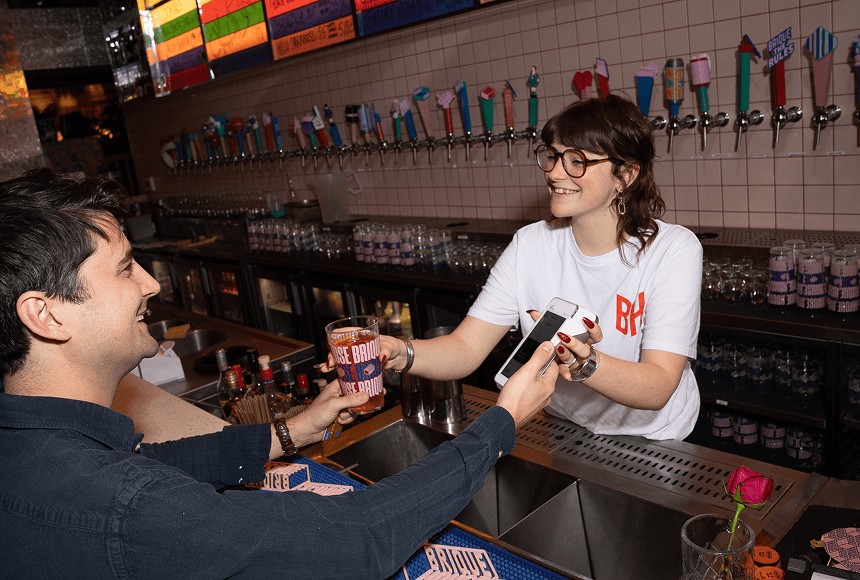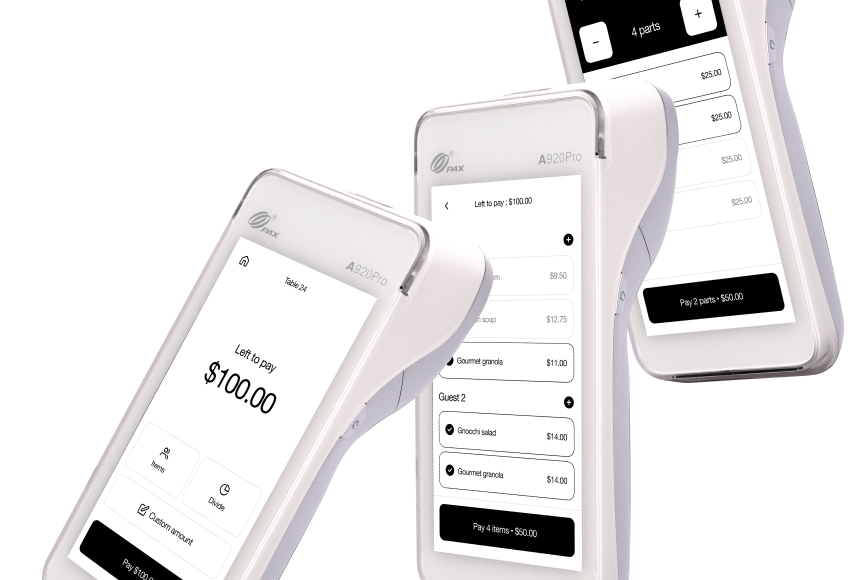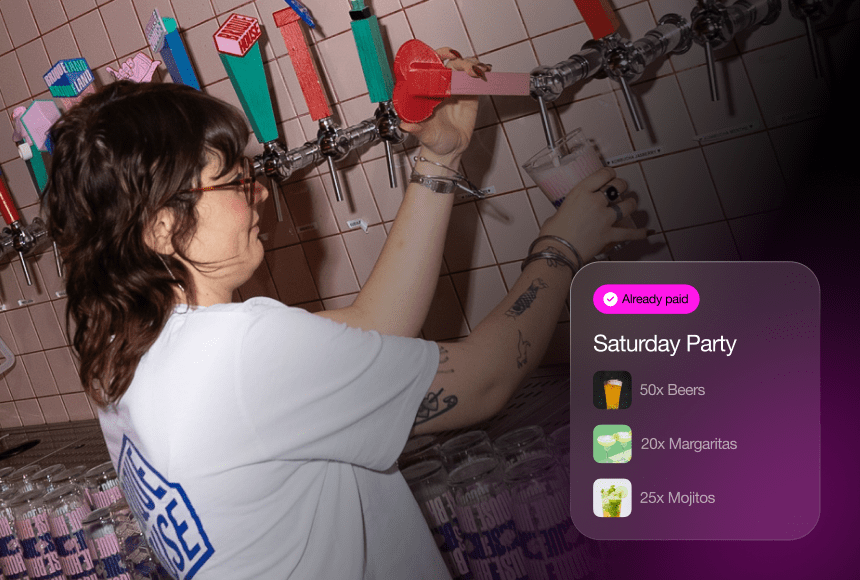
Cutting Costs and Boosting Efficiency Through Modern Payment Solutions
Why Restaurants Are Embracing Digital Payment Tech
You’ve probably noticed a shift in how customers prefer to settle their bills: fewer people pulling out credit cards or cash, more using their phones or scanning a quick QR code. For restaurant owners, this isn’t just a nod to modern convenience—it’s a glimpse into how digital payment technologies can save you money, time, and headaches.
But how do payment terminals and digital tools actually reduce costs for your business? Why does making the switch matter? As the industry evolves, saving every cent counts. Here, we’ll explore how adopting new generation payment systems helps rein in operational expenses, speed up service, and pave the way for better margins.
Revisiting the Traditional Payment Setup—and Its Hidden Costs
In a traditional restaurant payment flow, the server prints out checks, takes the credit card or cash, runs to a single point-of-sale station to process payment, then returns for a signature or to provide change. This routine might sound harmless, but you could be losing money—and staff energy—on:
- Extended Table Turn Times: The longer it takes for guests to pay, the slower your tables rotate, limiting how many parties you can serve in a peak shift.
- Paper and Printing Expenses: Piles of receipts and constant ink or paper roll replacements aren’t cheap, especially if your staff ends up printing duplicates or reprinting for mistakes.
- Potential Billing Errors: Manually entering final amounts might lead to accidental overcharges or missed items. That can create frustrations or even comped meals if disputes arise.
- Server Overlaps: Servers cluster at the main POS system, each waiting for their turn to punch in orders or run cards, costing you precious staff time.
While each of these issues might be small in isolation, they add up. Over a month or year, inefficiencies in payment can noticeably dent profits.
Modern Payment Terminals: A Quick Overview
Enter the new generation of payment terminals—sleeker, often touchscreen-driven devices that can do more than just read a magnetic strip or chip. In many cases, they’re connected via Wi-Fi or cellular data, featuring apps that integrate directly with your point-of-sale system. Some provide:
- Contactless Payments: Letting customers tap their phone or card. They pay in seconds, reducing wait times.
- QR Code Payment: A simple scan can open a digital checkout page, where diners settle up on their own device. Sunday’s approach exemplifies this, tying in tips and receipts in one smooth flow.
- On-Screen Gratuity Prompts: Clear tip suggestions that often boost the average gratuity, providing an indirect pay raise for staff.
- Built-In Reporting: Live analytics on transaction volumes, average ticket size, and more, feeding data into the back office in real time.
These features aren’t just bells and whistles. They frequently translate into tangible savings—be it in paper costs, staff allocation, or even reduced chargeback incidents, since transactions are clear and secure.
How a Digital Payment System Leads to Cost Savings
You might ask, “Sure, it’s convenient—but does it really cut my expenses?” Let’s break down the most significant ways:
1. Lower Labor Costs
One of the biggest price tags in any restaurant budget is labor. If your servers spend less time rushing between the table and the POS terminal, or troubleshooting machine errors, they can handle more tables or channel extra attention toward upselling.
- Fewer Trips to the Register: A server might make multiple journeys just to finalize one payment. Handheld terminals or QR-based payments slash those journeys, opening time for more vital tasks like greeting new guests.
- Real-Time Bill Adjustments: If there’s an item discrepancy, staff can fix it instantly on the digital terminal. Gone are the days of reprinting multiple receipts and tying up staff at the front desk.
By trimming 5–10 minutes of busywork per table, your team can manage more covers without you adding extra shifts or employees. Over the long run, that translates into real labor savings.
2. Reduced Material Expenses
All those receipts and paper rolls cost money, especially if you’re a high-volume establishment. With digital receipts, you can cut back significantly:
- Fewer Paper Rolls: Transition to text or email receipts. Customers typically appreciate the eco-friendly option, and you’ll slash your printing budget.
- Less Ink Waste: Constantly replacing ink or dealing with machine jams adds up. A system that prints fewer receipts means fewer supplies to order.
A GreenAmerica.org (Paper Receipts & Paper Waste) study shows retailers spend thousands of dollars a year on receipt paper alone. Shifting even partially to digital receipts can recoup a noticeable chunk of change.
3. Faster Table Turn and Higher Volume
Time is money in hospitality. When a payment process drags, you can’t seat the next group. And if guests get impatient, they might skip dessert—or skip coming back altogether. A swift, intuitive payment solution can:
- Accelerate Checkouts: Diners handle payment on their phone, finishing the entire transaction in under a minute. Some restaurants report saving 5–7 minutes per table.
- Seat Additional Parties: Over busy shifts, that can mean an entire extra seating, increasing daily revenue without added costs. With higher turnover, your fixed expenses (rent, utilities) stretch further across more sales.
Even if each table frees up just a few minutes early, those minutes compound over the course of the night, raising your potential earnings and offsetting overheads.
Insight Through Data: Making More Profitable Decisions
Digital terminals often come equipped with analytics dashboards. By syncing with your POS, you gain a clear picture of peak hours, popular menu items, and average check values. This data can inform:
- Staff Scheduling: If you know precisely when transaction volumes spike, you can staff accordingly, avoiding over-scheduling on slow nights and under-scheduling on busy ones.
- Menu Adjustments: Identify which items move quickly and which barely sell. Trim or highlight menu sections to optimize food costs, reduce waste, and boost margins.
- Promotion Tracking: If you run a happy hour special, a digital terminal can show real-time results on how it affects check size or total sales, letting you fine-tune marketing spend.
With better data, your decisions become more precise. That precision often saves money by preventing guesswork or over-purchasing.
Security and Fraud Prevention
Restaurant fraud can take many forms, from fake chargebacks to card skimming. Smart payment terminals provide robust encryption, sometimes even tokenizing card data so sensitive info never enters your systems.
- Minimize Chargebacks: Clear digital records and secure transactions reduce disputes. When you can show a verified transaction log, it’s easier to defend against fraudulent chargeback claims.
- Staff Accountability: A logged, secure transaction flow discourages internal theft. Each payment is tied to a specific server or terminal, so anomalies are easier to spot.
By decreasing fraud-related losses, you indirectly cut costs that might otherwise eat into your profits. More secure transactions also protect your reputation, which is priceless in a field as competitive as hospitality.
Easing the Tipping Process
Tipping is central to many restaurants’ wage structures, but the old method of scribbling a tip on a paper receipt can be clumsy or inconsistent. Digital payment solutions often embed tip prompts right on the final checkout screen.
- Suggested Tip Amounts: Customers see a quick selection—like 15%, 20%, or 25%—and a custom option. This clarity nudges some diners to tip more generously.
- Seamless Splitting: Groups can split the bill by item or percentage. Less confusion means less staff time devoted to dividing checks manually.
- Reduced Errors: No more accidental double-tips or disputes over who paid how much. Automated logging ensures each tip is correctly allocated.
When servers consistently earn higher tips, you retain them longer, minimizing costly turnover. Meanwhile, guests appreciate a simpler, faster exit.
Real-World Example: A High-Volume Bistro
Imagine a bustling bistro open daily for lunch and dinner. They introduce a digital payment solution—like scanning a QR code at each table—to cut down on manual card processing. Over the next month:
- Paper Costs Plummet: Most receipts go digital, saving hundreds of dollars on printer rolls.
- Table Turnover Improves by 10%: Freed from waiting around for checks, guests leave quickly once they’re finished. That adds a partial extra seating in peak shifts.
- Labor Hours Stabilize: Servers no longer scramble back to the POS station, so fewer staff hours are spent “in transit.” Management doesn’t have to bring on as many extra hands during busy days.
Those small gains cumulatively increase the bistro’s monthly net income. Meanwhile, servers are happier, reporting easier check management and often seeing slightly higher tips. Guests appreciate not being held hostage at the end of their meal, making them more likely to return or leave positive reviews.
Key Considerations When Selecting a Payment Terminal
So you’re sold on the idea, but how do you pick the right one? Consider these factors:
- Hardware vs. QR Code Approach: Handheld hardware can be pricier but might feel tangible for staff. A QR code-based system, such as the one sunday offers, can reduce the need for special devices—customers simply use their phones.
- Integration with Your POS: Look for easy data sync. If your new solution doesn’t talk to your existing software, you risk duplicating effort or messing up your sales reports.
- Connectivity Requirements: Wi-Fi-based solutions may struggle if your network is shaky. Check whether the payment tool has offline modes or cellular backup if needed.
- Security and Compliance: EMV, PCI compliance, encryption, and tokenization are non-negotiable to protect diners’ card info.
- Long-Term Fees: Is there a monthly subscription, a per-transaction cost, or both? Make sure you factor these into your cost-benefit analysis.
Ultimately, the best terminal is the one that aligns with how your restaurant actually runs. High-tech doesn’t mean high value unless it solves real problems in your daily flow.
Implementation Tips for a Smooth Rollout
Great, you’ve chosen a platform—how do you ensure a successful launch? Consider these steps:
- Test in a Controlled Environment: Maybe start on a few tables or for specific server shifts. Iron out any kinks before going restaurant-wide.
- Train Your Staff Thoroughly: Show them how to handle transactions, add last-minute items, and help guests who might be less tech-savvy.
- Promote It to Diners: Small signs or short instructions on the menu help guests understand they can pay via phone or an advanced handheld. Clarity avoids confusion and speeds adoption.
- Solicit Feedback: Ask your team and customers about the experience. If there’s consistent confusion, adjust the signage or provide a quick tutorial when presenting the check.
Adoption rates typically rise fast as both staff and guests realize the time they save. The key is ensuring everyone understands the new method and sees its benefits in real time.
Looking Toward a More Digitally Driven Future
The restaurant industry is under constant pressure to do more with less—less staff time, fewer wasted resources, and narrower margins. Embracing digital solutions for payment, whether that’s a modern terminal or a contactless QR flow, can mark a turning point. By reducing costs on paper, speeding table turns, cutting labor inefficiencies, and mitigating fraud or billing mistakes, you’re not just upgrading technology—you’re reshaping your bottom line.
As diners become more comfortable with quick, mobile-driven transactions, the appeal of a fast, frictionless payment only grows. If you’re seeking practical ways to trim spending while improving guest satisfaction, adopting a new-generation payment terminal or a QR-based approach like sunday could be the step you need. It’s not just about the money saved—it’s about delivering an experience that feels both efficient and welcoming.
Give it a thoughtful look. Evaluate your current bottlenecks and how they translate into needless expenses. There’s a good chance you’ll find that a shift to digital payments doesn’t just pay for itself—it could become a major asset in how your restaurant stays competitive, lean, and delightfully customer-centric in the busy seasons ahead.
Find out more today
Drop us your details below and we’ll reach out within the next 24h
The payment terminal to make your operation simpler.
Connected to your POS, we offer the only payment terminal specifically designed for restaurants.



